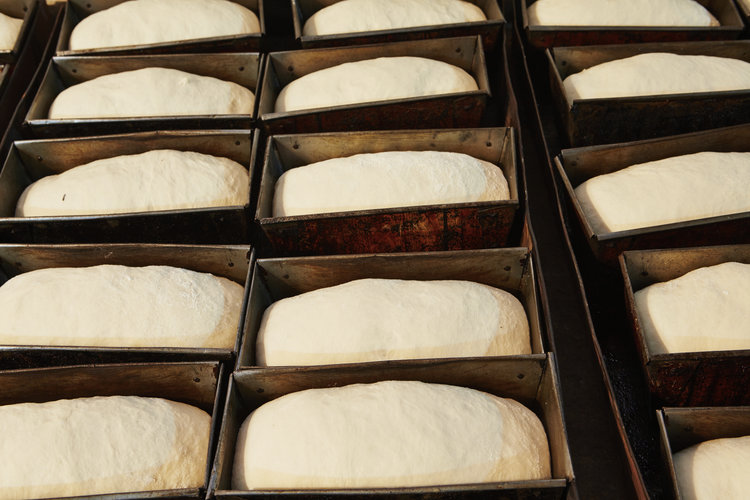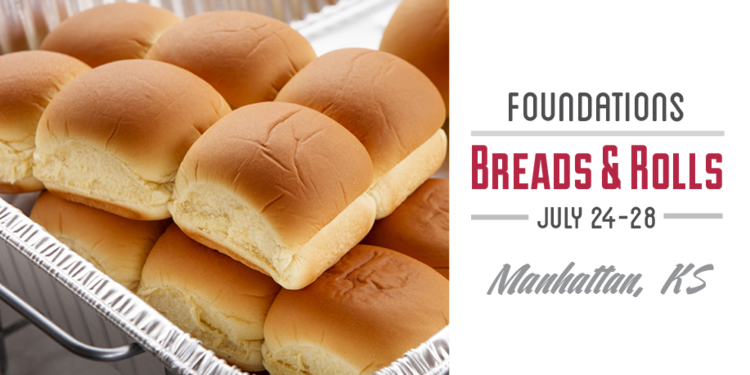Tip of the Week: How do yeast, salt, and sugar impact bread and roll products?
When producing breads and rolls, many different ingredients impact the finished product. Let’s look at some key players!
Yeast: Yeast's main function in breads and rolls is leavening, which is the process of producing gas (carbon dioxide or CO2). This gas, along with water vapor and entrapped air, then expands during proofing and baking causing the dough to expand (rise). It should be noted that the production of carbon dioxide does not create the air cells in the dough, but rather expands the existing air cells that are trapped during the mixing process. By enzymatic action, yeast converts starch into fermentable sugars, which in turn are converted to carbon dioxide gas and alcohol. The leavening of bread and rolls produces a product that is lighter and more palatable to eat. It has a big impact on the eating quality of the finished product. Leavening is also responsible for the volume of the finished product.
Besides its leavening function, yeast enzyme activity is largely responsible for the conditioning of the dough, which is sometimes referred to as “mellowing” or “maturing” the dough or sponge. Yeast converts sugars (starch) into ethanol alcohol and acids during fermentation. The ethanol alcohol and acids have “mellowing” effect on the dough/sponge giving us biochemical development or maturing of the dough/sponge. Acids lower the pH and have a softening effect on the dough, while the ethanol alcohol also has a maturing effect on the gluten protein. These acids and alcohols makes the gluten more developed resulting in thin, gas-retaining cell walls. This biochemical development develops the dough so it retains its extensibility and elasticity to expand without rupturing during makeup stress and proofing. This helps with dough consistency and results in better characteristics that impact the symmetry and grain of the finished product.
The distinctive fermentation flavor and aroma that is unique to yeast-leavened breads and rolls is a secondary product of the fermentation process. Fermentation gives us flavor from created organic compounds produced like glycerol, acetic acid, lactic acid, aldehydes, fusel oils and other flavor precursors.

As yeast fermentation is taking place and acids are being produced, the pH of the dough is falling. For example, a freshly mixed bread dough will have a pH of 5.3 and after fermentation the pH drops to 4.5. A lower pH will cause the crust of the bread to be lighter if no other formulation adjustments are made. Also, the mold-free shelf-life will improve with a lower pH as well as the effectiveness of the mold inhibitors such Calcium Propionate.
Salt: One of the main functions of salt in bread and roll production is to bring out the flavors of the other ingredients. Salt is typically used at levels of 1.50% to 2.25% (Baker’s Percent or flour basis). Breads made with salt levels below 1.50% will taste bland while breads made with more than 2.25% will taste salty. The flavor of salt is usually not desirable, but salt has the property of enhancing other flavors. It also has a toughening or tightening effect upon the gluten during mixing and improves the gas retention and hence the texture and grain of the finished product. In addition, salt helps to regulate or control the action of yeast and thereby the rate of fermentation. This is done due to the salt’s osmotic pressure that it exerts on yeast.
Sugar: In yeast-raised products like bread and rolls, sugar provides food for the yeast and gives a sweet taste to the finished product. In normal bread production, 3-3.5% of fermentable solids are required for yeast activity. These fermentable solids may be from the sugar, but can also be derived from the conversion of the damaged starch in the flour to sugar. Sugar is not an essential ingredient in bread production. Yeast uses sugar in the fermentation process. Sugars which remain after fermentation are referred to as residual sugars and these residual sugars have many secondary functions related to them. Residual sugars will contribute a sweet flavor although breads typically are not noted as being sweet baked products. These residual sugars contribute to crust color due to their carmelization during baking. High levels of sugar will result in faster formation of crust color and will give you a darker crust color. This carmelization of the crust will contribute to the taste of the finished bread. Sugar, being very hygroscopic (ability to attract and retain moisture), will also improve the shelf-life of the finished product.
Understanding ingredient functionality of breads and rolls is important for bakers. Knowing how ingredients such as yeast, salt, or sugar impact the final product helps the baker to troubleshoot problems or develop breads and rolls to desired product characteristics.
What is the most perfect percentage blend for sugar and salt
Normal usage of salt is 1.75 to 2.25% (Baker’s % or based on the flour in formula). White breads will typically have around 8% sugar solids but can actually range from 0 to 15% in a white pan bread. When sugar exceeds 15% we consider that a “sweet dough” product. We run an 8% level of sugar in our experimental white bread. Again these %’s are Baker’s % (in other words – based on flour). Obviously as you increase the sugar in a white pan bread formula you increase the sweetness of the resulting product. What you consider “good taste” depends on how sweet you wish the bread to taste.



